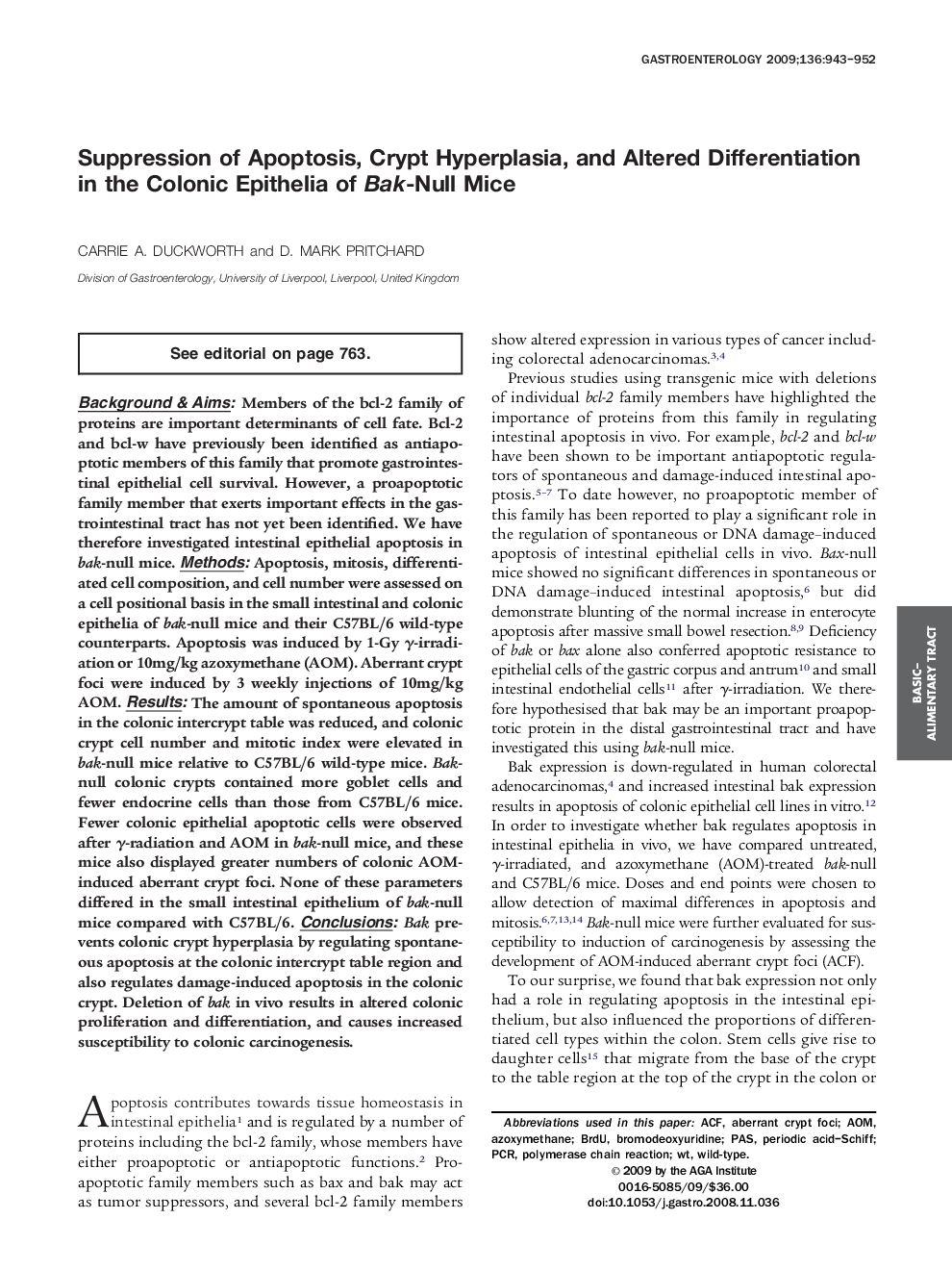| Article ID | Journal | Published Year | Pages | File Type |
|---|---|---|---|---|
| 3298732 | Gastroenterology | 2009 | 10 Pages |
Background & AimsMembers of the bcl-2 family of proteins are important determinants of cell fate. Bcl-2 and bcl-w have previously been identified as antiapoptotic members of this family that promote gastrointestinal epithelial cell survival. However, a proapoptotic family member that exerts important effects in the gastrointestinal tract has not yet been identified. We have therefore investigated intestinal epithelial apoptosis in bak-null mice.MethodsApoptosis, mitosis, differentiated cell composition, and cell number were assessed on a cell positional basis in the small intestinal and colonic epithelia of bak-null mice and their C57BL/6 wild-type counterparts. Apoptosis was induced by 1-Gy γ-irradiation or 10mg/kg azoxymethane (AOM). Aberrant crypt foci were induced by 3 weekly injections of 10mg/kg AOM.ResultsThe amount of spontaneous apoptosis in the colonic intercrypt table was reduced, and colonic crypt cell number and mitotic index were elevated in bak-null mice relative to C57BL/6 wild-type mice. Bak-null colonic crypts contained more goblet cells and fewer endocrine cells than those from C57BL/6 mice. Fewer colonic epithelial apoptotic cells were observed after γ-radiation and AOM in bak-null mice, and these mice also displayed greater numbers of colonic AOM-induced aberrant crypt foci. None of these parameters differed in the small intestinal epithelium of bak-null mice compared with C57BL/6.ConclusionsBak prevents colonic crypt hyperplasia by regulating spontaneous apoptosis at the colonic intercrypt table region and also regulates damage-induced apoptosis in the colonic crypt. Deletion of bak in vivo results in altered colonic proliferation and differentiation, and causes increased susceptibility to colonic carcinogenesis.
